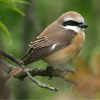Category: Animals & Plants
Mountain Verditer-Flycatcher ( Eumyias panayensis )
Common in forest, it is popularly called "Lito-lito" in Pilipino. Forehead, lores and chin, deep black; feather bordering black, face bright verditer blue, rest of upperparts verditer blue; belly and undertail coverts white; wing and tail feathers dark grey edged in brighter verditer blue.
The 14 birds featured are:
-
Mindanao Bleeding Heart Pigeon (Gallicolumba criniger)
-
Nicobar Pigeon (Caloenas nicobarica)
-
Black-chinned Fruit Dove (Ptilinopus leclancheri)
-
Metallic Pigeon (Columba vitiensis)
-
Pink-necked Green Pigeon (Treron vernans)
-
Amethyst Brown Dove (Phapitreron amethystina)
-
Grey Imperial Pigeon (Ducula pickeringii)
-
Red Turtle Dove (Streptopelia tranquebarica)
-
Pied Imperial Pigeon (Ducula bicolor)
-
Spotted-Imperial Pigeon (Ducula carola)
-
Philippine Eagle (Pithecophaga jefferyi)
-
Philippine Cockatoo (Cacatua haematuropygia)
-
Java Sparrow (Padda oryzivora)
-
Blue-capped Wood-Kingfisher (Actenoides hombroni)
Medinilla magnifica – Commonly called rose grape belonging to the family of plants called Melastomataceae Juss., this shrub is a stunning flower endemic to the Philippines. It is usually found in high altitudes growing up to 6 feet. The shrub has either ribbed or winged stem and glossy green leaves with conspicuously pale veins. The flowers are breathtaking growing as a bunch of small pink clusters attached to large pink bracts sheltered by its curved leaves.
|
|
The Philippines is home to the world's richest marine biodiversities, including 4900 species of marine plants and animals, 28 percent of which are economically important and 10 percent are flagship species. In fact, the country is acknowledged as the center of marine biodiversity, with many more species still being discovered. This rich resource has placed the country as one of the biggest fish producer, ranking 8th worldwide. It has been providing the Filipinos with food and livelihoods and contributing much to the improvement of the economy through exports of fishery products.
|
The Philippine crocodile is endemic to the Philippines. Its scientific name is Crocodylus Mindorensis, after Mindoro, where the type of specimen was caught. It is a freshwater crocodile. It can grow up to three meters. Females construct a nest of grass, twigs and sand close to water and lay up to thirty eggs. After two to three months, the eggs hatch. Juvenile crocodiles eat shrimps, insects and snails. Adults prey on fish, birds, rats and snakes and occasionally on larger animals such as wild pigs and deer.
Atis,/br> Philippine name for Sweet Sop, Sugar Apple, and Custard Apple. Atis was introduced to the Philippines during the Spanish times. It is a small tree that grows between 10 to 20 feet high when fully matured with oblong leaves and green heart-shaped fruits with polygonal tubercles. The atis fruit has a white, sweet flesh and black seeds. http://www.philippineherbalmedicine.org/atis.htm
According to PCARRD-DOST website, “Hoya, commonly called wax plant, belongs to the Asclepiadaceae family. They are once part of the Apocinaceae family. In the Philippines, hoyas can be found all over the islands at all altitudes. As early as 1837, Philippine Hoyas was mentioned in the publication of Flora de las Islas Filipinas. To date there are 51 species which have been identified.
One of the interesting feature of the souvenir sheet is Saver, a remarkably intelligent white “asong pinoy” or Aspin (common Filipino native breed). Saver, who was trained to do various dog tricks by Apolinario Villarosa Lazarte, Jr., is a multi-awarded dog and starred in many films and commercials. He also inspired the signing of R.A. 8485, which is commonly known as Animal Cruelty Law.
According to the Chinese Zodiac, the Year of 2010 is the Year of the Tiger, which begins on February 14, 2010 and ends on February 2, 2011. The Tiger is the third sign in the cycle of Chinese Zodiac, which consists of 12 animal signs. It is a sign of courage. This fearless and fiery fighter is revered by the ancient Chinese as the sign that wards off the three main disasters of a household: fire, thieves and ghosts.
|
|
Brown Shrike (Lanius cristatus)
Medium sized bird with forehead pale grey leading into greyish brown head and back; dark brown wings; throat white; breast and belly golden buff.
|


Recent Comments